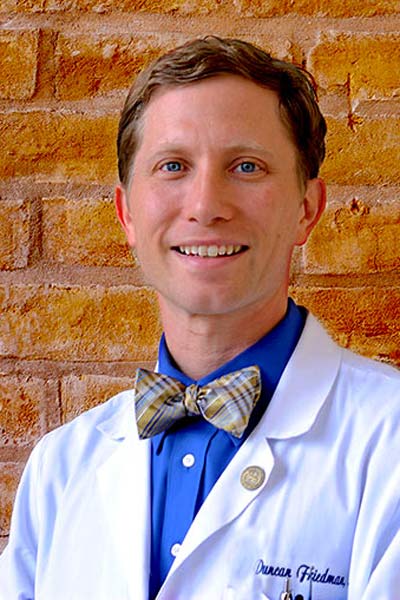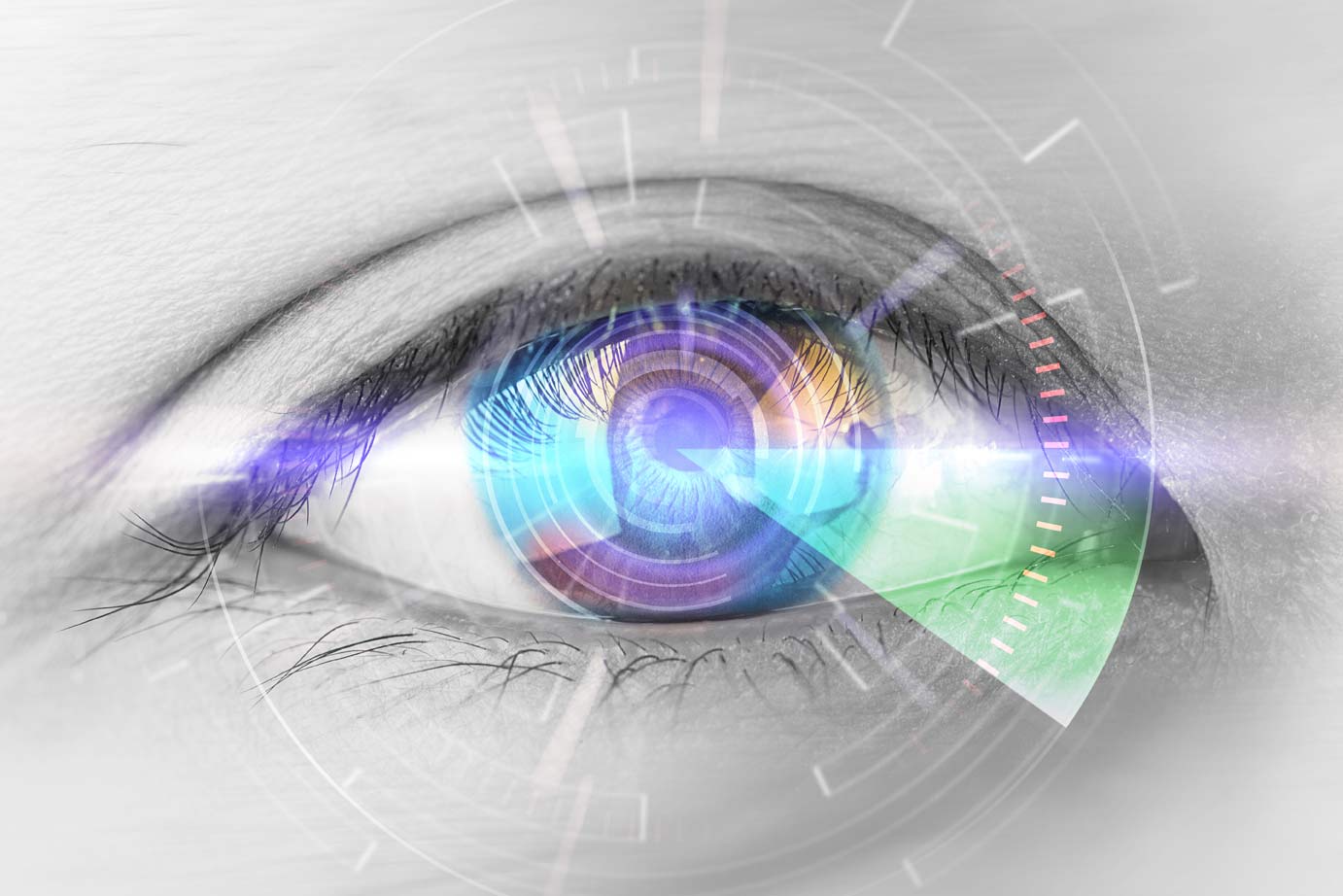Dr. Friedman's Office: (210) 880-3000
Macular Holes (specifically full thickness macular holes)
I talk about the vitreous a lot . . . it makes sense as I am a vitreoretinal surgeon. The vitreous can cause a lot of problems if it does not behave normally. One of these problems is a macular hole. A macular hole is a bit of a misnomer. When the vitreous gel refuses to let go of the central part of the retina, known as the fovea, you develop a macular hole. The gel likely still is filling the hole, but when an eye care specialist looks at the retina, it looks like a hole in the fovea.
Imagine a circle of people holding onto a gigantic circle of plastic wrap. If everybody pulls outward on their edge of the circle at the same time, the center part of that plastic wrap undergoes a lot of strain and tends to become really thin. This can cause the light receptors that are responsible for our central vision to not function correctly. Most people with a macular hole complain of a central blind spot.
Although there is a small percentage of macular holes that can close spontaneously, (yes I have seen it happen), the majority of these holes need to be closed surgically. The current standard of therapy is to perform a surgery to remove the gel that is holding the hole open, known as a vitrectomy. By doing vitrectomy surgery alone, the macular hole will close 80% of the time. That means that 1/5 people would still have a macular hole after surgery. Retina specialists have routinely started to peel a very thin layer of tissue off of the surface of the retina during macular hole surgeries, and this increases the hole closure rate to about 90-95%. A final recommendation is to fill the eye with a gas bubble mixed with air that will slowly leave the eye over time through the bloodstream. By positioning the bubble over the retinal hole, it is believed that the retinal receptors are “pushed” back into place. I will go a little more into detail about bubbles a little further into this discussion. The gas bubble is likely to raise the success rate another 2-3%. That means, that most holes should close with one surgery.
I use the word “most” because there are a few holes that refuse to close. These are usually large macular holes (>0.5mm) that have been around for some time. There are also instances where scar tissue keeps the hole pulled open. Finally, in people with near-sighted eyes (known as myopic macular holes), the hole is constantly being stretched due to the natural shape of the eye. These holes are particularly tough to close. There are a few experimental techniques that have been used to try and close these recalcitrant holes (e.g., silicone oil, autologous blood/serum patches, stuffing the hole full of retinal tissue . . . I’m not kidding on the last one), but none of these interventions have undergone systematic review or rigorous study.
I will also take a moment to mention visual prognosis. People with full thickness macula holes tend to walk in with a central blind spot. The goal of surgery is to close the hole and get rid of the blind spot. Routinely, immediately after surgery the vision in the eye is poor. Why? Because there is a gigantic bubble of gas floating in the eye, and the eye was not built to look through gas. As the bubble dissipates back into the bloodstream, the vision hopefully returns to pre-surgical levels. It takes months for the retina to start to see improvements in vision. The best analogy I can make is to imagine that your retina is like a computer circuit board. When a macular hole occurs, the one million circuits all become unplugged at once. Once the retinal hole is closed, your body has to take the time to line-up and plug in each one of those circuits . . . one at a time. It takes a little time to get everything back in alignment. Further, the vision may not return completely to normal. I usually ask patients to be, well . . . patient. The vision gradually improves, and it might take 6 months to a year to fully know what the visual potential really will be.
Please feel free to contact us with further questions at sanantonioeyedoctormd@gmail.com.
Duncan Friedman, M.D.
Retina Specialist
San Antonio, Texas


